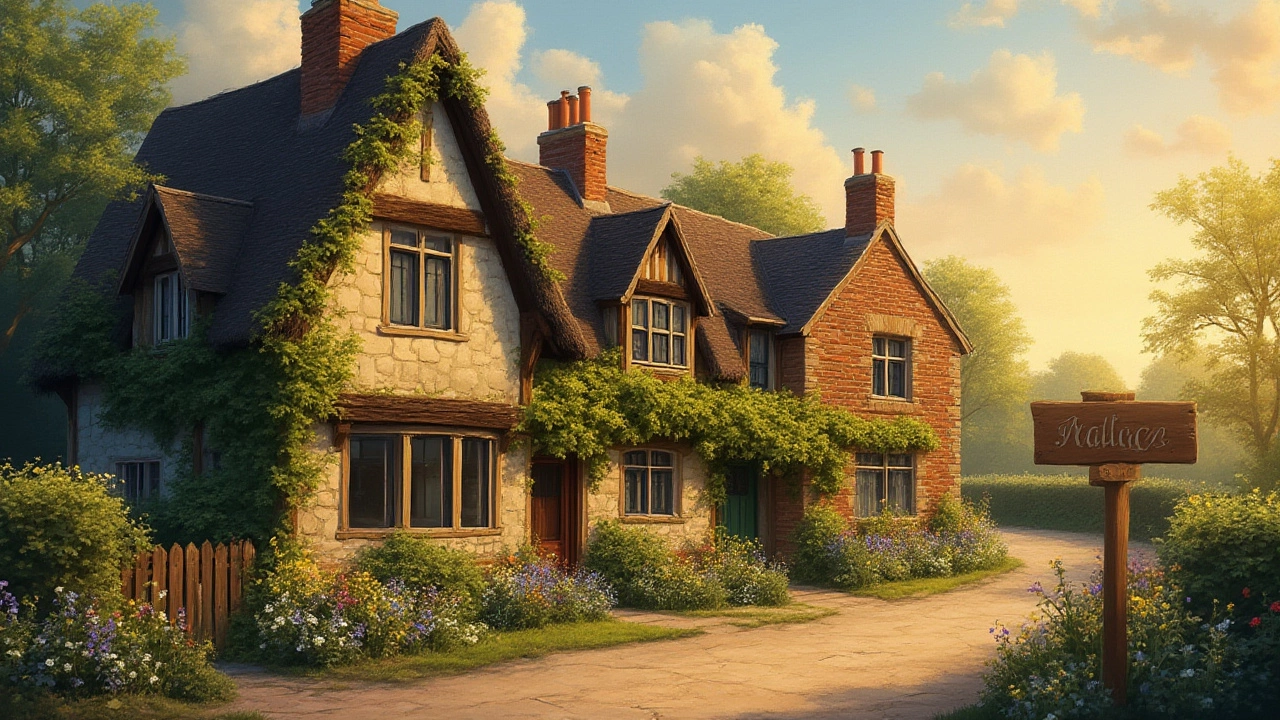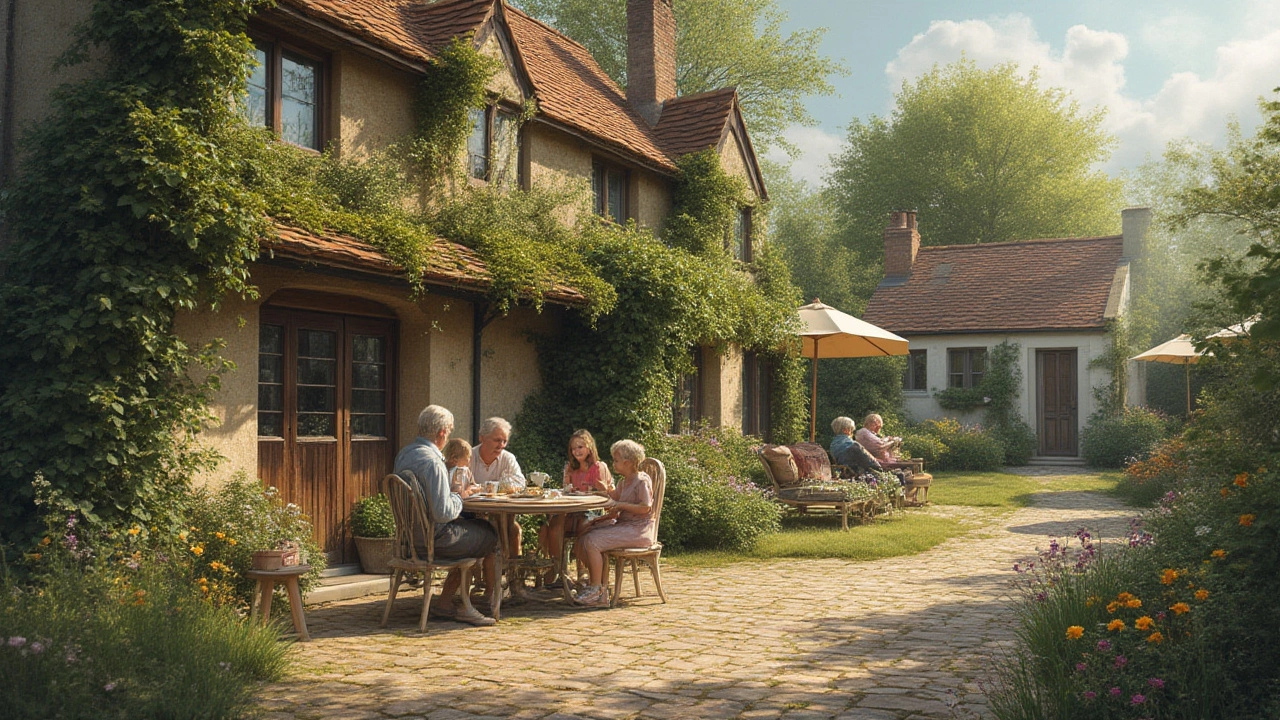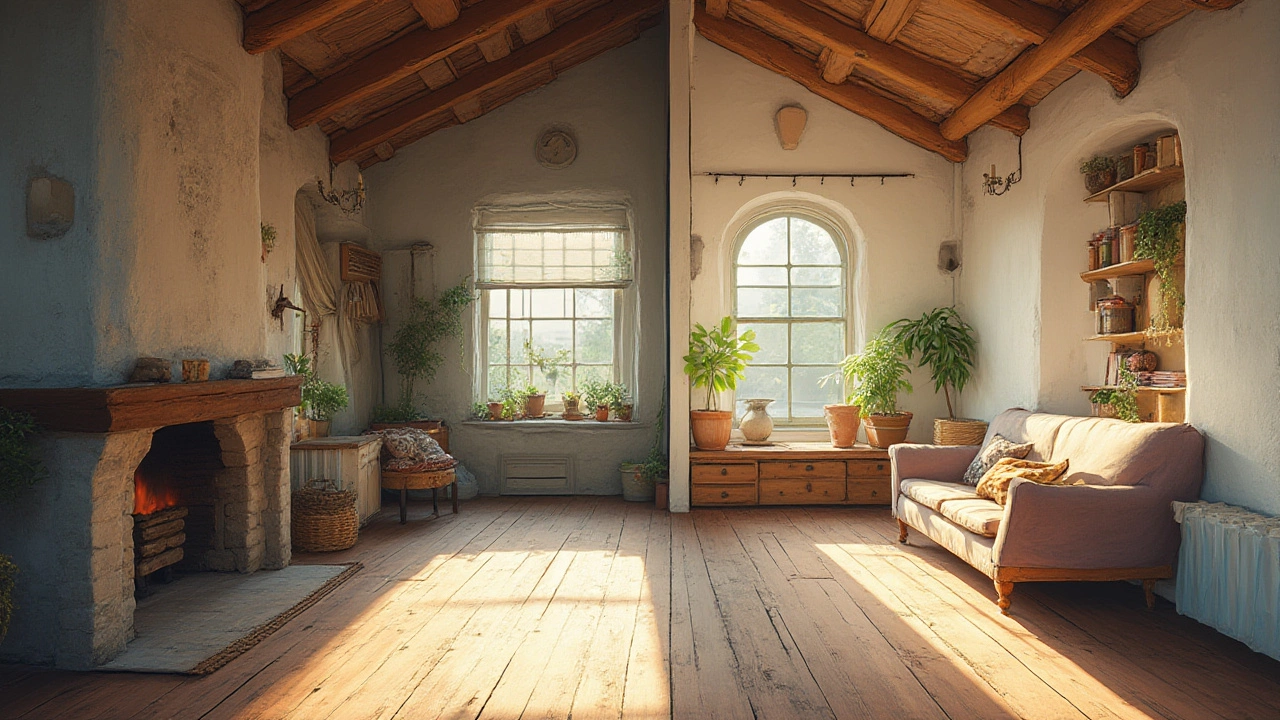Cottage vs Small House: Key Differences, Design, and Lifestyle Guide
 Jul, 18 2025
Jul, 18 2025
You know that cozy storybook home tucked into a green hillside or nestled by the sea? Most people will call it a cottage, maybe even a small house. But there’s a world of difference hiding behind those simple words. Here in Wellington, you just have to look between Thorndon’s nostalgic lanes and the playful baches scattered up the Kapiti Coast to see that not every small house is a cottage, even if both technically fit beneath the same square metre count. Let’s put aside the sweet romance of the names for now—what actually separates a *cottage* from a *small house*? Get ready to see your home, or your dream home, in a whole new light.
What is a Cottage? Practical Magic in a Quaint Shell
People like to think of cottages as places that practically hum with history and comfort. And for good reason. The word "cottage" actually stretches back to Medieval Europe, when a cottage was the home—and the hardworking centre—of rural labourers. Over the centuries, that practical core stuck around, but so did a rising sense of coziness. A typical cottage, especially in the UK or New Zealand, is usually one story (sometimes with a shy attic upstairs), built tight to the land. Its windows are never too large, and the roof might brim with thatch, terracotta, or something cheerfully makeshift. Cottages tend to feature timber elements—even if it’s just visible beams—or stonework that feels hand-laid. These places don’t like perfection. Cottages are about comfort, not grandeur. If you walk through a classic Kiwi cottage, you might spot a potbelly stove in the kitchen, low doorways (tall people, duck!), and an ever-present garden outside. In fact, gardens feel like a cottage’s best friend—herb patches, a sea of lavender, maybe even some overgrown roses climbing the weatherboards. It’s not rare in Europe or rural Aotearoa to find cottages painted blush pink or sea blue, letting their personalities run wild.
But the soul of a cottage goes deeper than just how it looks. It’s the stories—how many generations grew up under the same sloping ceiling, or the fact that, for a hundred years, tea was brewed in the same battered kettle on the wood stove? The community around a cottage is often close-knit, and you hear more laughter than lawnmowers. Building codes might be flexible, so you’ll rarely find a cookie-cutter layout. While restoration can be a pain, it keeps the wild heart of the cottage alive. If you ever visit Greytown or Arrowtown, all the squat, charming houses clinging to the roadsides? Cottages, through and through.
One thing to remember: cottages aren’t always tiny! Yes, many are compact, but it’s the style, warmth, and a bit of storybook magic that makes a cottage, not just size. That’s why you can spot huge “cottage-style” homes in American suburbia, even when they’re pushing 200 square metres. But for most of us, a cottage and humble square footage go hand in hand—roughly under 100m², give or take, with the heart (and chimney) at the centre.
Small House: Modern Simplicity, Streamlined Living
If a cottage is the friend who treasures their grandmother’s hand-knitted blankets, the small house is the friend who shops at IKEA and loves a clean surface. The main thing about small houses is... well, they’re small! But size isn’t the entire story—modern small houses usually start with a clean, streamlined design, and focus hard on function over frills.
These homes might be stand-alone or even part of a terrace, often under 90 or 100 square metres inside. The architecture is careful: open floor plans, minimal wasted space, huge windows to flood the inside with light. Forget the jumbled rooms of a traditional cottage—everything here flows. Kitchens run straight into lounges. Sleeping lofts perch over clever storage drawers. Small houses don’t really do quirky rooflines or odd nooks. They aim for easy cleaning, energy efficiency, and sometimes full-on sustainability. You’re as likely to stumble across polished concrete floors as you are to find heated towel rails or heat pumps on the wall. Modern building codes love the tiny house movement, and New Zealanders especially have jumped on the bandwagon, pivoting towards small houses to avoid sky-high rents and mortgages in cities like Wellington and Auckland.
Here’s something you might not know: a 2023 study by Stuff.co.nz found that a household living in a sub-80m² modern home spends on average 35% less per year on energy compared to the same family in a 120m² older house. Why? Small houses tend to be better insulated and pack in double (even triple) glazing, plus clever ventilation. These aren’t luxury homes—they’re attainable, practical, and often portable. The interiors can be as stark or as cozy as you want, though you’ll rarely find fussy wallpaper or too much clutter. Furniture tends to be multi-use, and every corner counts; think pull-out couches, wall beds, and even collapsible dining tables.
If you want an urban home that lets you walk or cycle everywhere, or a bolthole that’s easy to lock up and leave for a weekend adventure, a small house hits every spot. It’s an answer to modern city living for couples, young professionals, or empty nesters who’ve decided big mortgages just aren’t worth it. Unlike cottages, small houses are less about nostalgia and more about now. But if you want to fill your sleek little home with flowers and fairy lights, nothing’s stopping you from blending the two vibes.

Design Differences: Details That Matter
Most cottages and small houses share roughly the same footprint, so size alone isn’t the thing to look at when you’re trying to spot the difference. Instead, pay close attention to the details—those finishing touches and build choices that say a ton about what these homes want to be.
First up, let’s talk layout. Cottages nearly always come with a few closed-off rooms (a snug, a scullery, or a porch), while small houses love open plans. That means in a cottage, breakfast might be in a tiny kitchen separated from a sunroom, while the small house has you cooking and lounging all in the same new-age space. In Wellington, you can almost guess the building age by whether you bump into doorframes every few steps or everything flows cleanly from kitchen to courtyard.
Materials matter, too. Cottages keep things natural: weatherboards, slate, local stone, and pitched roofs. Small houses borrow from the future—steel, eco-panels, glass, and often, low-maintenance exteriors. Look up, and you’ll find cottage ceilings with exposed beams or patterns that feel a bit higgledy-piggledy. Small houses? Usually, flat ceilings and hidden structural work, so things appear seamless. And don’t forget the pets—cottage doors might be etched with a history of cat scratches and dog noses pressed to the glass, while small house doors are slick and modern, sometimes even with smart locks you can open via smartphone.
Here’s a quick look at how these differences stack up:
| Feature | Cottage | Small House |
|---|---|---|
| Year Built | 1800s–1950s mostly | 2000s–Present |
| Common Size | 50m²–100m² | 40m²–100m² |
| Layout | Closed rooms, nooks | Open-plan, lofts |
| Typical Materials | Wood, stone, brick | Glass, steel, modern cladding |
| Exterior Look | Quaint, hand-crafted | Sleek, geometric |
| Heating | Wood burner/Fireplace | Heat pump, underfloor |
| Window Style | Small, multipane | Large, modern panes |
| Garden | Often lush, part of design | May be minimal or patio |
One last tip for keen renovators or would-be buyers: if you crave authenticity and don’t mind quirky spaces, look for an original cottage. If you want a house that’s eco-friendly, customisable, and low-maintenance, a small (or tiny) house will make your life way easier.
Lifestyle and Day-to-Day Living: Two Worlds in One Neighbourhood
The size of your living space has a massive impact on daily life—but the cottage-vs-small-house divide goes deeper than just square footage. They’re different kinds of homes because they call for different kinds of lifestyles. Some people thrive in a place loaded with personality and rituals, others want “do-everything” spaces they can hack to suit busy lives.
Living in a cottage often means you’re part caretaker, part storyteller. These homes reward people who like to putter in gardens, tweak paint colours every spring, or keep an eye out for the next DIY fix. You might spend weekends weed-whacking the walkway or baking scones on that finicky old oven. Your morning could start with the smell of woodsmoke and end with wine in the tiny sunroom. Cottages often mean more attention to detail: you fix things yourself, swap plant cuttings with neighbours, and cherish things that are a bit imperfect. There’s a strong sense of connection to the past: you can almost feel the fingerprints of all those who lived there before. It’s an emotional investment as much as a financial one.
Small house living is about stripping life to what matters most. Fewer objects, less floor to mop, and, honestly, a lot less stress about things breaking. The furniture often doubles as storage, the decor is easy to clean, and you might even be able to lock it up for months and head off to travel. Modern appliances mean chores run quick, freeing up time for hobbies or work. Your space is zen-like, because clutter simply doesn’t fit. The tradeoff? Some people miss the old-world charm. But you’ll never have to patch a century-old sash window or chase wild ivy from eating your roof.
Here’s something else: many sustainability experts say that people living in smaller, newer homes (especially small houses) use way less power, create less waste, and cut down on environmental impact. So if you’re weighing lifestyle *and* your carbon footprint, that’s a big check mark in favour of the small house movement.

Which One is Right For You? Real-World Tips and Questions To Ask
So, should you chase the dream of a tumbledown cottage with charm for days, or jump into the sleek future of a small house? There’s no right answer—both have perks (and quirks) that can make daily life richer. Here’s how to choose, based on real, lived experience:
- What’s your appetite for maintenance? Lovers of cottages should be ready to fix, paint, and garden. If you’d rather call a tradie once a year, lean towards a new-build small house.
- Are you in it for tradition or tech? Cottages win hands-down on character, while small houses pack in the latest tech for insulation, security, and energy savings.
- Where is the property? Genuine cottages often sit in rural or coastal settings—small houses suit city blocks, infill lots, and anywhere you want to maximize location.
- How important is resale value? Older cottages can be a wild card, with price spikes for “character” properties if demand is high. Small houses often fetch strong prices for being new and efficient—but trends shift.
- Eco matters? Small houses are usually cheaper to heat and run, especially when built to modern standards.
- Are you growing a family, or downsizing? Cottages sometimes offer more closed-off rooms and privacy for families, but small houses win for singles or couples with a love of smart space.
Sometimes, you can have the best of both worlds! More and more designers are building new small houses that borrow the visual charm of old cottages (think classic window shutters and pastel front doors) but with every comfort of the 21st century. The most important thing is how you feel when you walk in the door—if it fits your story and the life you want to build, it’s the right kind of home, whether you call it a cottage or small house.
If you want to spot a true cottage, make sure to notice the garden gate, the smoky old chimney, and maybe a fading name above the door. Prefer a small house vibe? Look for big sliding doors, a rooftop veggie patch, or a clever foldaway kitchen. Both catch the light in their own special way. What matters most is that you—yes, you!—feel at home.